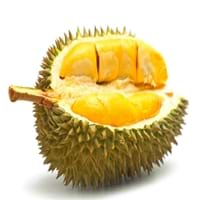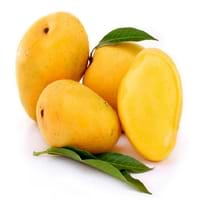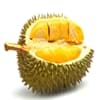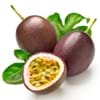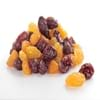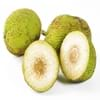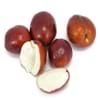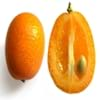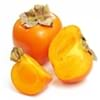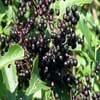Health Benefits
Anti depressant, Boosts immune system, Cancer prevention, Heart care, Reduces stress
Cancer prevention, Cures fatigue, Heart care, Prevents strokes
General Benefits
Anti oxidant properties, Anti-inflammatory properties, Boosts immune system, Controls blood pressure, Controls blood sugar levels, Digestive aid, Flu treatment, Strengthens bones
Anti oxidant properties, Boosts immune system, Controls blood pressure, Digestive aid, Improves eye vision, Maintains healthy cholesterol level
Skin Benefits
Anti-aging benefits, Brightens and lightens complexion
Anti-aging benefits, Brightens and lightens complexion, Skin cleansing, Skin rejuvenation, Treatment of acne, Treatment of blackheads, Treatment of dark spots
Hair Benefits
Promotes longer and healthier hair, Protects hair
Good conditioner, Prevents hair loss, Treatment of dandruff
Allergy Symptoms
Diarrhea, Headaches, Hives, Nasal congestion, Red rash, Runny nose, Vomiting
Abdominal pains, Breathing difficulty, Diarrhea, Runny nose, Sneezing, Swelling of mouth, tongue or lips, Watery eyes
Side Effects
Affects blood glucose levels, Nausea, Stomach pain
Increase in blood sugar level, Diarrhoea, Weight gain
Best Time to Eat
Along with meal, As a snack in the late afternoon, Don't consume at night and before bed, Morning time (before lunch)
Don't consume at night and before bed, Eat the fresh ones, avoid mixing with any other foods, don't eat after meal., Morning time (before lunch)
Vitamin B5 (Pantothenic Acid)
Vitamin C (Ascorbic Acid)
Vitamin E (Tocopherole)
Not Available
Vitamin K (Phyllochinone)
Not Available
Lutein+Zeaxanthin
Not Available
Calories in Fresh Fruit with Peel
Not Available
Not Available
Calories in Fresh Fruit without Peel
Calories in Canned Form
Not Available
Calories in Pie
Not Available
Type
Tree fruit, Tropical
Tree fruit
Season
Monsoon
Spring, Summer
Varieties
D24, D99 (Gob kecil), D123 (Chanee), D145 (Beserah), D158 (Gan Yau), D159 (Monthong), D169 (Tok Litok), D188, D189, D190, D163 (Hor Lor) and D164 (Ang Bak)
Alphonso, Valencia Pride, Badami, Chaunsa, Nam Dok Mai, Glenn, Sindhri, Madame Francique, Kesar and Keitt
Color
Green
Orange, Red, Yellow
Inside Color
Yellow
Yellow
Taste
Creamy, Sweet
Sweet
Origin
South-Eastern Asia
Southern Asia
Grows on
Not Available
Trees
Soil Type
Clay
Clay, Loam, Sand
Climatic Conditions
Hot, Humid
Humid, Warm to hot climate
Facts about
- 1 kg of durian contains 1350 calories which may cause weight gain.
- It may have a hyperthermic effect on the body, making you feel warmer.
- Study shows that durian has an ability to reduce infertility in men & women.
- A mango tree can bear fruits even after the age of 300 years.
- Height of a mango tree can be as high as 100 feet.
- In India, mango is known as a symbol of love. Also, a mango basket is considered as the sign of friendship.
Top Producer
Thailand
India
Other Countries
Indonesia, Malaysia, Philippines
Bangladesh, Brazil, China, Indonesia, Mexico, Nigeria, Pakistan, Philippines, Thailand
Top Importer
China
United States of America
Top Exporter
Thailand
Mexico
Botanical Name
Durio zibethinus
Mangifera Indica
Synonym
Lahia Hassk
Not Available
Subkingdom
Tracheobionta
Tracheobionta
Division
Magnoliophyta
Magnoliophyta
Class
Magnoliopsida
Magnoliopsida
Subclass
Dillenhidae
Rosidae
Order
Malvales
Sapindales
Family
Malvaceae
Anacardiaceae
Species
D. zibethinus
M. indica
Generic Group
Not Available
Cashew
Difference Between Durian and Mango
We might think that Durian and Mango are similar with respect to nutritional value and health benefits. But the nutrient content of both fruits is different. Durian and Mango Facts such as their taste, shape, color, and size are also distinct. The difference between Durian and Mango is explained here.
The amount of calories in 100 gm of fresh Durian and Mango with peel is Not Available and Not Available and the amount of calories without peel is 147.00 kcal and 60.00 kcal respectively. Thus, Durian and Mango belong to High Calorie Fruits and Low Calorie Fruits category.These fruits might or might not differ with respect to their scientific classification. The order of Durian and Mango is Malvales and Sapindales respectively. Durian belongs to Malvaceae family and Mango belongs to Anacardiaceae family. Durian belongs to Durio genus of D. zibethinus species and Mango belongs to Mangifera genus of M. indica species. Beings plants, both fruits belong to Plantae Kingdom.
